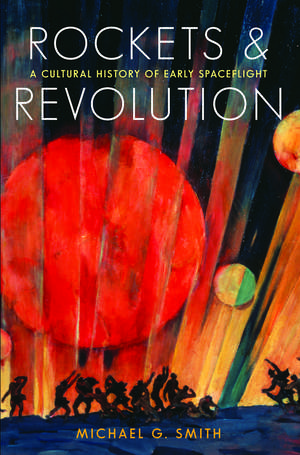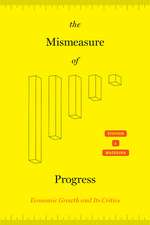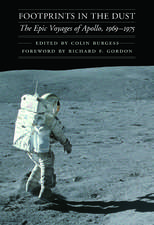Rockets and Revolution: A Cultural History of Early Spaceflight
Autor Michael G. Smithen Limba Engleză Hardback – dec 2014
Rockets and Revolution offers a multifaceted study of the race toward space in the first half of the twentieth century, examining how the Russian, European, and American pioneers competed against one another in the early years to acquire the fundamentals of rocket science, engineer simple rockets, and ultimately prepare the path for human spaceflight.
Between 1903 and 1953, Russia matured in radical and dramatic ways as the tensions and expectations of the Russian revolution drew it both westward and spaceward. European and American industrial capacities became the models to imitate and to surpass. The burden was always on Soviet Russia to catch up—enough to achieve a number of remarkable “firsts” in these years, from the first national rocket society to the first comprehensive surveys of spaceflight. Russia rose to the challenges of its Western rivals time and again, transcending the arenas of science and technology and adapting rocket science to popular culture, science fiction, political ideology, and military programs.
While that race seemed well on its way to achieving the goal of space travel and exploring life on other planets, during the second half of the twentieth century these scientific advances turned back on humankind with the development of the intercontinental ballistic missile and the coming of the Cold War.
Between 1903 and 1953, Russia matured in radical and dramatic ways as the tensions and expectations of the Russian revolution drew it both westward and spaceward. European and American industrial capacities became the models to imitate and to surpass. The burden was always on Soviet Russia to catch up—enough to achieve a number of remarkable “firsts” in these years, from the first national rocket society to the first comprehensive surveys of spaceflight. Russia rose to the challenges of its Western rivals time and again, transcending the arenas of science and technology and adapting rocket science to popular culture, science fiction, political ideology, and military programs.
While that race seemed well on its way to achieving the goal of space travel and exploring life on other planets, during the second half of the twentieth century these scientific advances turned back on humankind with the development of the intercontinental ballistic missile and the coming of the Cold War.
Preț: 251.90 lei
Nou
Puncte Express: 378
Preț estimativ în valută:
48.20€ • 50.46$ • 39.88£
48.20€ • 50.46$ • 39.88£
Carte disponibilă
Livrare economică 15-29 martie
Livrare express 04-08 martie pentru 45.43 lei
Preluare comenzi: 021 569.72.76
Specificații
ISBN-13: 9780803255227
ISBN-10: 0803255225
Pagini: 448
Ilustrații: 4 photographs, 30 illustrations, 4 tables
Dimensiuni: 152 x 229 x 37 mm
Greutate: 0.81 kg
Editura: Nebraska
Colecția University of Nebraska Press
Locul publicării:United States
ISBN-10: 0803255225
Pagini: 448
Ilustrații: 4 photographs, 30 illustrations, 4 tables
Dimensiuni: 152 x 229 x 37 mm
Greutate: 0.81 kg
Editura: Nebraska
Colecția University of Nebraska Press
Locul publicării:United States
Notă biografică
Michael G. Smith is an associate professor of history at Purdue University.
Cuprins
List of Illustrations
List of Tables
Introduction
Part 1. The Surveillance of Outer Space and the Russian Empire
1. Envisioning the Biological Universe
2. Mystical Economies of Earth and Space
3. The Mechanics of Interplanetary Travel
Part 2. The Mastery of Time and the Bolshevik Revolution
4. Lyrical Cosmism of the Russian Revolution
5. The Pioneers and the Spaceflight Imperative
6. Rocket Spaceships as Science Fictions
7. The Origins and Ends of Life on Earth
Part 3. The Rise of Rocket Science and the Soviet Union
8. The First Foundations of Astronautics
9. A Race into the Stratosphere
10. Stalinism and the Genesis of Cosmonautics
Conclusion
Notes
Selected Bibliography
Index
List of Tables
Introduction
Part 1. The Surveillance of Outer Space and the Russian Empire
1. Envisioning the Biological Universe
2. Mystical Economies of Earth and Space
3. The Mechanics of Interplanetary Travel
Part 2. The Mastery of Time and the Bolshevik Revolution
4. Lyrical Cosmism of the Russian Revolution
5. The Pioneers and the Spaceflight Imperative
6. Rocket Spaceships as Science Fictions
7. The Origins and Ends of Life on Earth
Part 3. The Rise of Rocket Science and the Soviet Union
8. The First Foundations of Astronautics
9. A Race into the Stratosphere
10. Stalinism and the Genesis of Cosmonautics
Conclusion
Notes
Selected Bibliography
Index
Recenzii
"For anyone familiar with the history of spaceflight—particularly in America—this book will be immensely rewarding."—Hunter Hollins, Quest
"Highly recommended."—Midwest Book Review
"Rockets and Revolution brings a variety of new sources and a refreshing perspective into the debates about the cultural dimensions of spaceflight."—Slava Gerovitch, CritCom
"Rockets and Revolution succeeds in offering a cultural history of the space age."—Paul Josephson, American Historical Review
"A remarkably rich study."—Michael K. Launer, Slavic and East European Journal
“A refreshing perspective on the universal thrust for space exploration.”—Colin Burgess, Outward Odyssey series editor and author of Liberty Bell 7: The Suborbital Mercury Flight of Virgil I. Grissom




















